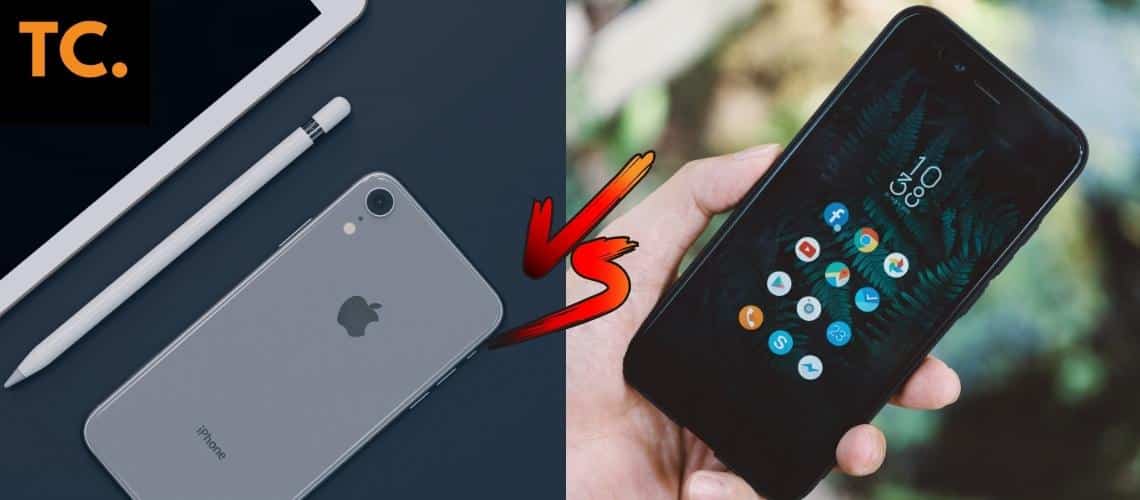iOS vs. Android: Which is better for students and parents?
Introduction
Today there are a lot of companies competing in the mobile market, and it can be hard to decide which one is best. Let’s look at the differences between iOS vs. Android, what they offer students and parents, and how to decide which platform is right for your child.
iOS vs. Android: Which is better for students and parents? : A blog about the differences between the two popular mobile platforms available in the current market in 2022.
Let’s take a look at a few of the key differences between iOS and Android.
First, the fact that iOS has a more secure operating system is one of its biggest advantages. It comes with built-in security features like two-step verification and fingerprint scanning, which can help keep your phone safe from unwanted access. In addition to this, it’s also easier to use than Android because Apple provides user manuals for every model of their phones so that users know how to perform basic functions on their devices without any technical issues. However, all these great features come at a price—Apple products are more expensive than other brands like Samsung or LG which offer similar services but cost less money!
Finally, although Android is an open source platform (meaning anyone can create apps for it), which makes developing new software easier than ever before; there are still some limitations imposed by Google Inc., such as limiting how much data an app can transfer over Wi-fi connections per hour per device (this means no Netflix binges). This could be frustrating as users may have trouble accessing certain sites/content due
Why is this important?
Why do you want to know? Because if you’re a parent, or a student, or both—or even if you’re just someone who likes technology—you probably have an opinion on the matter. And if that’s the case, then read on!
Both iOS and Android are popular operating systems used by millions of people worldwide. They’ve been installed on over 7 billion devices and have made their way into schools and homes around the world. So how do these two software giants stack up against each other?
Key takeaways
- iOS and Android are both great options for students and parents.
- Both platforms are equally secure, but differ in terms of customization.
- iOS is easier to use than Android, but also more expensive.
Who uses iOS devices (iPhone, iPad) and Android devices (Samsung, LG and others)
iOS devices are more popular than Android devices, but that doesn’t mean that you should use them. There are plenty of reasons why you might choose an Android device instead of an iPhone or iPad.
- iOS devices are more expensive than their Android counterparts.
- iOS devices have fewer options for customization than their Android counterparts.
- The open source nature of Android makes it easier to customize your phone or tablet with apps and widgets that can make it more useful or fun to use. You can even root your device if you want access to deeper levels of customization (though this comes with risks).
The differences between iOS vs. Android
The differences between iOS vs. Android are striking. Though they’re both excellent in their own right, they have their own strengths and weaknesses that make them better suited for different kinds of people.
- iOS is more expensive than Android, but it’s also more secure: Apple takes security seriously and has a reputation for building stronger devices overall (so long as you don’t mind only being able to use one brand). They also have robust parental controls that allow parents to limit how much time their kids spend on the device each day, block certain apps or websites from appearing in the search results, and even prevent children from downloading new apps altogether.
- Android is cheaper than iPhone: If price is your biggest concern when buying a new phone for yourself or your child, then this could be an important factor in choosing between iOS vs. Android phones. Additionally, many models feature expandable storage via SD card slots or cloud services like Google Drive so you won’t run out of space anytime soon (though we recommend using these features sparingly).
Security and encryption on both operating systems
If you’re concerned about your data and smartphone security, iOS is the way to go.
iOS is more secure than Android. It has more rigorous encryption standards, and it’s not just something the company says—it’s true. According to a study by Lookout Mobile Security, Apple devices are far less vulnerable to malware than Android devices are.
But what about data privacy? Are all those apps that collect information on you as they work actually going out of their way to protect it? Can they even be trusted with it? If you’re worried about how much information your phone might be sharing behind the scenes, iOS is again the better option for both students and parents because of its stricter limits on what an app can do with user data.
Because of these differences between operating systems, many people choose one over another based on their personal preferences for features or feel like one operating system works better for them in general; however, if security is one important factor in deciding which phone would suit best for students or parents looking for something that protects against potential threats then we recommend choosing Apple products over Android ones.
Which one is easier to use?
This is always a contentious subject, and the answer depends on what you’re looking for. If you want something that’s easy to learn, iOS has a distinct advantage. In fact, the iPhone was the first smartphone to ever outsell its competition — Android phones — in the United States. Apple has done an excellent job of keeping their operating system simple and intuitive while adding new features over time to make it even better.
On the other hand, if you prefer functionality over simplicity (and don’t mind spending some time learning how things work), then Android may be a better option for you. While there are certainly plenty of options available on both platforms (in terms of apps), I think many people would agree that Google Play Store has more choices than Apple Store
How to set up parental controls on an iOS device
To take advantage of parental controls on an iOS device, you must first open the Settings app. Once there, you’ll need to select General and then Restrictions. At this point, if you haven’t already done so, your device will ask that you set up a passcode—make sure to do this immediately!
Once inside the Restrictions menu, tap Enable Restrictions. You’ll now be asked to enter a passcode and create a new passcode for future access. Enter this information and save it for future use (you won’t have access again without it).
Now that your restrictions are enabled, let’s take a look at what they do:
- First go into Allowed Content by tapping Edit under Allowed Content in the bottom right corner of your screen. This will bring up several different categories where you can place restrictions on what apps or content can be accessed while using your device (such as limiting games or video streaming only during certain times of day). After clicking Edit under each category title (websites/social networks/etc.), you can select each type individually within its own subcategory such as “games” or “video streaming services” if available so that changes made here will override all others across all categories at once if necessary (useful when giving someone else temporary access but not wanting them messing around with other areas).
How to set up parental controls on an Android device
Parental controls for Android devices can be set up in a number of different ways. For example:
- You can use the built-in parental controls to control which apps your child uses and when they’re allowed to use them.
- You can create a Google Family link that allows you to manage your child’s device through an online dashboard and/or an app on your own phone or tablet.
- There are also a number of third-party apps available for parental control, including Norton Family Premier, Qustodio Parental Control and FamiSafe Monitor.
How to decide which device is right for your child
When choosing a device for your child, it’s important to consider their maturity level and how they will use the device. For example, if they are just learning how to use technology and access information online, an Android phone may be more appropriate. If they are using their phone as a way to keep in touch with friends and family, then an iPhone might be better suited for them.
If you want your child to learn about responsible technology use or how technology can benefit their learning environment—for example: understanding how important it is not to give out personal information online or that research needs accurate citations—then I would recommend an Android device over an iPhone because of its flexibility with apps such as Google Maps and Gmail which have educational features built into them.
Conclusion
When it comes to deciding on a mobile platform, we recommend doing your research. You want to make sure that whichever one you choose will be safe and secure for your child. We hope this article has provided some helpful information on the two most popular operating systems available today!







